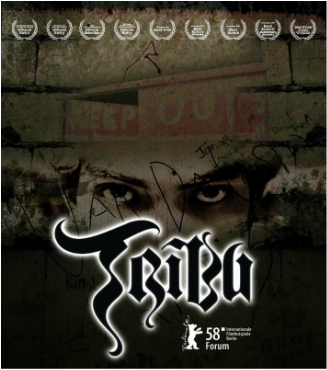 Tribue shows the cycle of urban poverty and violence. Tribue shows the cycle of urban poverty and violence.
Tags: children/youth, class, crime/law/deviance, inequality, rural/urban, violence, gangs, philippines, poverty, subtitles/CC, 61+ mins
Year: 2007 Length: 1:33:29 Access: YouTube Summary: This independent film, shot in the ghetto district of Tondo (Manila, Philippines), is "an ultra-realist depiction of youth corrupted by violence, death and decay, told documentary-style." The plot follows ten year-old Ebet as he witnesses the activities of rival street gangs, and is ultimately a story about the cycle of urban poverty. In the film, "the dangerous unlit streets and labyrinthine alleyways in the ghetto district of Tondo ... becomes a claustrrophobic backdrop to a random killing that triggers a wild and bloody gang war. Ebet, a 10 year old boy, encounters the members of Tondo’s gangsta tribes – juvenile thugs and petty criminals whose pastime of sex and drugs are veiled under their eloquent freestyle hip-hop rap – as each gang participates in a long, bloody and vicious cycle of revenge and reprisal, gangsta style. After a brutal midnight initiation ritual, young gang members discover the lifeless body of a young man on the street, knife still stuck in its back. Ebet watches as the police round up the gang, and charged for the murderous riots that erupt every night in the ghetto. The next day, members of the bereaved gang to whom the victim was a member of, discuss to find out which tribe perpetrated the crime. A vendetta is silently plotted, new alliances formed, to flush out the real murderers ... Hailed as a gritty portrayal of Manila’s notoriously violent streets of Tondo, Jim Libiran’s Tribu is Realist Cinema with a social project. To act as main actors, the filmmaker employed real-life gang members from rival clans, triggering a wave of unification and peace in a large part of Tondo's ghettos." Submitted By: Jim Libiran
3 Comments
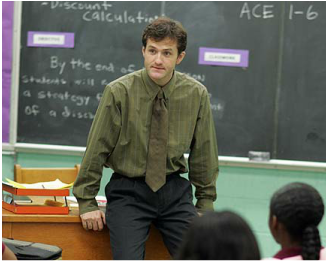 Unqualified teachers are much more likely in poorer schools. Unqualified teachers are much more likely in poorer schools.
Tags: children/youth, class, education, inequality, race/ethnicity, the wire, 00 to 05 mins
Year: 2006 Length: 1:31; 1:48 Access: YouTube clip 1; clip 2 Summary: Public education is meant to be the "great equalizer" and the cornerstone of the American Dream. But the reality is that the US has the greatest educational inequalities in the developed world, and in many ways, our educational system reproduces inequality rather than lessening it. These inequalities are largely rooted in how public schools are funded in the US. Most countries fund schools centrally and equally, but in the US, schools are largely funded through local property taxes and the wealthier your neighborhood, the wealthier the school (on average, wealthy schools spend 2-3 times more per pupil than poor schools). The impacts of these inequalities have been well documented in Kozol's (1991) classic study, Savage Inequalities, in more recent work (e.g. see "Structured for Failure: Race, Resources, and Student Achievement" by Linda Darling-Hammond, 2010); and they are illustrated throughout season 4 of The Wire. For example, schools in poorer districts cannot pay as high for teacher salaries and have a harder time attracting good teachers. In the first Wire clip above, the Principal and Assistant Principal discuss the teacher shortages that they have in science and math, and how the teachers took jobs in suburban schools. Roland Pryzbylewski (Prez) enters their office (after dealing with the schools' deteriorating infrastructure) in search of a job, and while he still lacks his teaching credentials, he is hired to teach math. Poor, low-achieving schools are five times as likely to have unqualified teachers, and this impacts teacher quality in the classroom (Darling-Hammond 2010). Schools in wealthier neighborhoods offer much higher salaries, more educational resources, and have fewer disruptive students, thus attracting better teachers to teach children from wealthier families. But the principals are happy to hear his past job was a police officer, given the severe behavioral issues Prez will face in the classroom. In the second clip, Bubbles helps his friend Sherrod return to school. Sherrod stopped attending school in the 5th grade, and is now 13 years old, which is a typical age for an 8th grader. But due to a lack of resources for students to repeat grade levels and a view that if they place the older children in the younger classes, "it us unfair to teachers, who are responsible for maintaining order." Accordingly, Sherrod will start off attending the 8th grade. This policy of "social promotion" effectively guarantees that Sherrod will not be prepared for the academic material taught in class. These types of inequality are also much more likely to impact students of color. Viewers would also be interested in this experiment on Oprah, where students from poor inner-city school traded places with a wealthy suburban school, which reinforces the examples above. You can also view other clips from The Wire that are useful for teaching sociological concepts. Submitted By: Paul Dean 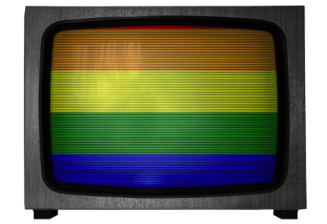 See how queerness on TV has, and hasn't, changed over time. See how queerness on TV has, and hasn't, changed over time.
Tags: inequality, lgbtq, marriage/family, media, sex/sexuality, representation, 00 to 05 mins
Year: 2014 Length: 3:55 Access: YouTube Summary: At the 2015 Emmy Awards, Viola Davis won an Emmy for her role in the TV show, “How to Get Away With Murder,” making her the first African-American to win an Emmy for best lead actress in a drama series. Her acceptance speech was equally important, as she “placed her award within the larger context of diversity in Hollywood.” Davis’s win and acceptance speech reflect a situation that is simultaneously characterized by changing and static social dynamics. This resembles what sociologist Patricia Hill Collins has called the “changing-same” nature of contemporary social inequality, a situation in which new opportunities for change are presented as a result of dramatic shifts in the global political economy, yet where patterns of racial, gender, class and other inequalities nonetheless remain intact. This video clip provides another opportunity to consider the changing-same feature of social inequality in Hollywood. Focusing specifically on representations of queer characters on television, the clip illustrates how these representations have changed over the past several decades. As explained in this Slate article, “These days there are more queer TV characters than ever before, and television representations of gay life are increasingly rich and nuanced, even as the old lesbians-titilate, gays-entertain tropes sometimes remain in play. This video considers all the out-queers on the small screen—as well as all the gay wannabes, pretend-to-bes, and should-bes—taking stock of how far we've come and looking forward to where we might go next.” Yet, given Collins' insight on the changing-same nature of social inequalities, viewers are encouraged to consider how patterns of inequality around sexuality, queerness, and gender non-conformity remain entrenched in American popular culture. Thanks to Michael Miller for suggesting this clip. Submitted By: Valerie Chepp 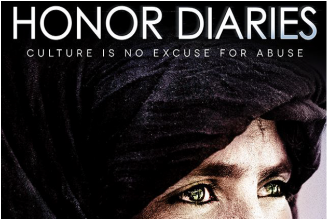 Film explores the oppression of women in honor-based societies. Film explores the oppression of women in honor-based societies.
Tags: culture, gender, inequality, social mvmts/social change/resistance, cultural relativism, gender oppression, honor-based societies, transnational feminism, 11 to 20 mins
Year: 2013 Length: 11:14 Access: YouTube Summary: This is an extended preview from the film Honor Diaries (2013), which explores the subjugation of women in honor-based societies. As explained in the clip by Ayaan Hirsi Ali, author of Infidel, “The concept of honor, it’s very difficult to explain it to Western societies. A lot of it has to do with how women behave and the sexuality of women.” Oanta Ahmed, author of In the Land of Invisible Women, elaborates saying, “Honor is something that is carried and contained in women, and is there to be guarded by men." The movie focuses on the work of nine women’s rights activists—Zainab Khan, Raheel Raza, Juliana Taimoorazy, Nazanin Afshin-Jam, Raquel Saraswati, Fahima Hashim, Nazie Eftekhari, Jasvinder Sanghera, and Manda Zand Ervin—and explores gender-based abuses including female genital mutilation, child marriages, and acid attacks. This video is useful for illustrating the concept of transnational feminist activism or, “activist efforts by feminists to change gender relations outside their own states and collaborate between and among feminists in different countries” (Wade and Ferree 2015:358). In this case, women activists from different countries (including Somalia, Saudi Arabia, Iran, Sudan, Canada, Iraq, and the UK) have come together to work against the subjugation of women in honor-based societies. The clip is also useful for inciting discussion around tensions pertaining to culturally relativist arguments about gender oppression. Western feminists have a long history of imposing their own culturally-specific perspective of feminism upon those in other societies. Aware of this imperialistic feature of Western feminisms’ history, many, including students, may resist criticizing oppressive practices taking place in non-Western societies. The activists in the clip confront this issue head-on (around the 7:50 minute mark), highlighting the resistance toward criticizing these practices for fear of being labeled an Islamaphobe. Saraswati says, "We shy away from criticizing anything that’s different because we don’t want to be seen as the type of people that would restrict someone’s expression." Westerners can learn to distinguish respectful cultural relativism from abusive oppressive practices by looking for guidance from the countless numbers of human rights activists working on these issues in their home countries. As evidenced by the women activists in this video, the notion of honor as being intricately tied to women's behaviors and bodies is justification for abuse. Submitted By: Valerie Chepp 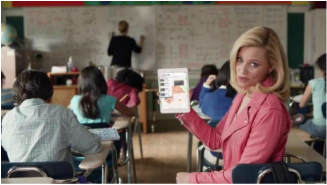 This real estate ad relates housing and education to inequality. This real estate ad relates housing and education to inequality.
Tags: class, education, inequality, housing, intergenerational inequality, school funding, 00 to 05 mins
Year: 2015 Length: 0:29 Access: iSpot.tv Summary: In this commercial for Realtor.com, Elizabeth Banks explains how privilege is passed on from parents to children. In the ad she explains a feature on the Realtor.com website that shows where school boundaries are located. This gives parents looking for a house the ability to know which schools their children will attend, or as she states, it lets you “know where to live to get your kid into the best school.” She then explains how sending kids to better schools means attending better colleges, which means better jobs. In just 12 seconds, she explains how economic inequality is reproduced from generation to generation. The importance of housing in maintaining and reinforcing inequality has been explored extensively in sociology. Property taxes are a major source of funding for public schools. Those schools located in districts with higher housing values will generally have more funding for public schools. Students in higher income areas have better facilities and supplies, more access to technology, and more opportunities for extra-curricular activities. This then increases their chances of attending better colleges, and therefore increases their chances for higher occupational attainment. Rather than education leveling the playing field between poor, middle-class, and rich students, we see that education is a way that inequality gets reinforced. The commercial is appealing to parents to buy houses in the “good neighborhoods” and avoid the “bad neighborhoods.” But what does this mean for families who don’t have the financial wherewithal to move into neighborhoods with the best school districts? Their kids are more likely to attend underfunded schools, which decreases their chances of attending better colleges. So we see the children of middle-class and upper-class parents will have opportunities and privileges passed on to them that are denied those from lower socio-economic statuses. This video would pair well with this New York Times article. Submitted By: Wes Shirley 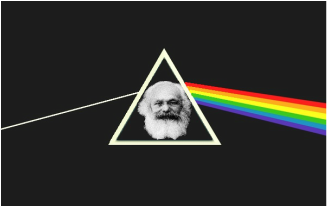 Pink Floyd is useful for teaching sociological theory Pink Floyd is useful for teaching sociological theory
Tags: class, education, foucault, government/the state, inequality, knowledge, marx/marxism, theory, alienation, althusser, gramsci, hegemony, state apparatuses, subtitles/CC, 00 to 05 mins
Year: 1982 Length: 5:13 Access: YouTube Summary: In my Classic Sociological Theory class, I ask students to write a reflective essay on Marxist concepts of alienation (see also here, here, here, here, and here) and class conflict, and then I ask them to relate the concepts to Pink Floyd's "Another Brick in the Wall." It is a common misunderstanding that Marx was solely a materialist who ignored the sphere of ideas. On the contrary, Marx explicitly argued that "the ideas of the rulling class were in every epoch the ruling ideas." To stretch students’ analytical skills I ask and encourage them to also incorporate Althusser’s idea of state apparatuses (repressive and ideological). That is, drawing from the video, what does it mean to say that the state is repressive in order to further the interests of the ruling classes? I then ask students to push their argument even further and incorporate a discussion of Gramsci’s notion of hegemony (see also here, here, and here). Here the question is, how does the bourgeoisie develop a hegemonic culture, wherein its own values and norms become common sense for all? Instructors should feel free to press for a more radical departure from Marx. For instance, it might be fruitful to draw on Foucault to analyze resistance, punishment, and the complex notion of power-knowledge. I remind students that the objective is not to merely summarize the theories and create links between concepts and the video, but to use the video as a springboard for a deeper discussion about resistance and oppression. Submitted by: Hadi Khoshneviss, University of South Florida 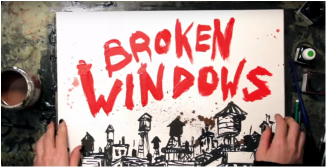 Molly Crabapple explains the dark side of broken windows policing Molly Crabapple explains the dark side of broken windows policing
Tags: class, crime/law/deviance, inequality, prejudice/discrimination, race/ethnicity, violence, broken windows theory, criminal justice system, institutional racism, racism, subtitles/CC, 00 to 05 mins
Year: 2015 Length: 4:14 Access: YouTube Summary: This exquisitely illustrated presentation from artist Molly Crabapple examines the origins of the broken windows theory, the kind of policing it led to, and the theory's connection to the deaths of people like Eric Garner and Akai Gurley. As Crabapple explains, social scientists James Q. Wilson and George L. Kelling introduced the theory in 1982 in an article they wrote for the Atlantic Monthly. "Social psychologists and police officers tend to agree," they explained, "if a window in a building is broken and is left unrepaired, all the rest of the windows will soon be broken...one unrepaired broken window is a signal that no one cares, and so breaking more windows costs nothing." • The theory has proven to be enormously influential in cities and municipalities all over the United States, and in New York City the theory appears to be the justification, if not the inspiration, behind the NYPD's controversial stop-and-frisk program. In line with the philosophy that police officers should devote time and attention to preventing broken windows in an effort to stave off a larger breakdown of social order, the NYPD regularly stops and searches people they encounter on the streets in order to confiscate guns before they can be used in more serious crimes. However, as Crabapple notes, it's important not to lose sight of the fact that broken windows policing doesn't mean police will fix up poor neighborhoods, and arguably, stop-and-frisk policing has not been implemented as a way to restore safety to crime-ridden communities. On the contrary, a far more convincing case can be made that the stop-and-frisk program has simply directed a disproportionate share of police scrutiny toward poor and marginalized people. • As a result, critics argue that the program has weakened citizens' cooperation with police, and it may have even increased the number of violent altercations between police and the citizens of those marginalized communities. On February 19th, 2014, NYPD officers beat 84-year-old Kang Wang for jaywalking. On July 17th of the same year, police choked and killed Eric Garner after initially confronting him based on the suspicion he was selling loose cigarettes. On the day he was killed, Garner voiced his objection to the police harassment, stating, "This stops today." Unfortunately, the NYPD's stop-and-frisk program and other forms of broken windows policing are by now entrenched features of the criminal justice system, and it is not yet clear when such programs might end. Submitted By: Lester Andrist 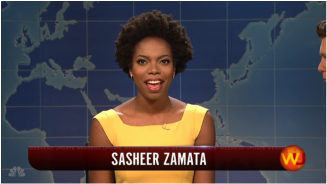 Sasheer Zamata wonders why there aren't any Black emojis. Sasheer Zamata wonders why there aren't any Black emojis.
Tags: discourse/language, inequality, media, prejudice/discrimination, race/ethnicity, science/technology, representation, subtitles/CC, 00 to 05 mins
Year: 2014 Length: 2:27 Access: Hulu Summary: Given the current media spotlight on racist patterns of violence, it's easy to lose sight of more subtle forms of racism. For instance, a daily barrage of media featuring white protagonists simply becomes an unremarked upon backdrop of everyday life, like the piped elevator music that cajoles one into humming along despite being ambivalent about the tune. One racist backdrop might be the book covers one encounters at a typical bookstore. For instance, one analyst found that in 2011 a white person was featured on roughly 90% of all young adult book covers, whereas a Person of Color could only be found on somewhere between 10% and 15% of covers. The quiet tendency to whitewash media is but one reason why representations of whiteness have come to dominate the media landscape. Black and brown characters in popular books are routinely rewritten as white characters in Hollywood film adaptations. And speaking of film and television, one 2013 study found that while whites comprised 63% of the population, they were featured on the evening cable news shows 79% of the time. • The point is not to simply draw attention to the disproportionate number of roles being written for white men and women, or the fact that whites are being given more of a voice in popular media. Instead, my aim is to simply point out that visual media, such as advertising, television, and film, play a key role in promoting the idea of whiteness as the default or universal human. More pointedly, such visual media reinforce the idea that People of Color are deviations, somehow not fully compatible with the human ideal. • Consider the phrasing, "normal to dark skin," recently spotted on a bottle of Dove body lotion. It escapes most people's attention that "normal" is being used as a synonym for "white." Whiteness is the default. In the above comedy sketch from Saturday Night Live, Sasheer Zamata points out a second example of how whiteness becomes normalized in the selection of emojis used in texting. Not one of the more than 800 emojis depicts a Black person, and as Zamata notes, "Unicode, the company that creates emojis, thought that instead of one black person we needed two different kinds of dragons, nine different cat faces, three generations of a white family. And all the hands are white, too. Even the Black power fist is white!" Submitted by: Lester Andrist 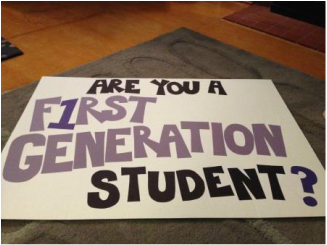 The first-gen experience can be an important part of one's identity. The first-gen experience can be an important part of one's identity.
Tags: children/youth, class, education, inequality, cultural capital, first-gen, social mobility, 00 to 05 mins
Year: 2015 Length: 5:57 Access: New York Times Summary: This video and the accompanying NYT article analyze the experiences of students who are the first in their family to attend college (i.e. first-gen students). It addresses the challenges that students face, including not knowing how to network, discomfort in talking with professors, not having parents to help them navigate higher education, not having money to buy appropriate clothes for professional interviews, and needing to work while attending college. In sociological terms, these reflect inequalities in both economic capital (e.g. needing to work) and cultural capital (e.g. not having the knowledge and disposition necessary for navigating professional institutions). The video also mentions positive parts of the first-gen experience, such as knowing how to do their own laundry and other basic skills for independently taking care of oneself, and having empathy for others who struggle. It addresses issues of identity, including how some students actively conceal a first-gen identity, difficulties communicating the experience to family, but also having pride in (and "coming out" as) first-gen. These issues of identity and experience in both college and professional life are insightfully explored in Alfred Lubrano's book, Limbo: Blue Collar Roots, White Collar Dreams. Other resources on first-gen students include this Chronicle of Higher Education report and Social Class on Campus: Theories and Manifestations (Barratt 2011). The video also documents Brown's first conference for inter-ivy first-gen students, organized by the student group 1vyG at Brown, where students shared their first-gen experiences. While the video focuses on first-gen students from ivy-league Brown University, the experiences translate to other institutional contexts as well (I can attest to this as a first-gen student myself!). Submitted By: Paul Dean 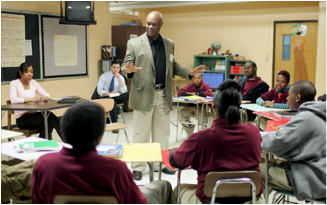 Bunny Colvin asks, "what makes a good corner boy?" Bunny Colvin asks, "what makes a good corner boy?"
Tags: class, children/youth, culture, inequality, theory, bourdieu, cultural capital, institutions, the wire, 00 to 05 mins
Year: 2006 Length: 2:57 Access: YouTube Summary: In this clip from season 4 of The Wire, the troubled youth discuss what makes a good "corner boy" and illustrates how cultural capital works. As demonstrated in the clip (and throughout season 4), they lack the cultural capital of professional settings. For example, they speak out of turn, disrespect authority, and speak inappropriately for the context. But when Bunny Colvin asks the students what makes a good "corner boy," the students come alive and quickly describe the necessary traits: "keep the count straight," "don't trust nobody"; and "keep your eyes open." Their knowledge about, and interest in, working the corner illustrates the cultural capital that the teenagers possess. It is useful in navigating the streets and being a successful member of the drug-dealing gang hierarchy. The issue is that broader society does not value this form of cultural capital, which is possessed more by poor, inner-city children. Instead, society values the kinds of cultural capital that are more common middle-class suburban schools and families. In other words, the problem is not that the boys do not have any skills, but they do not have a certain type of skills. For a complementary example from The Wire, watch the restaurant scene, in which these same children lack the cultural capital necessary for eating at a fancy restaurant. The kind of knowledge and skills necessary for that setting (e.g. knowing appropriate behavioral norms, understanding menu items, being comfortable in that setting) could be helpful in a professional job interview or networking. The different values placed on cultural capital more common among middle-class families illustrate how they are more likely to reproduce their class position, thus reinforcing the class structure across generations. Like the unequal distribution of wealth, or high-quality schools, inequalities in cultural capital help to shape different economic opportunities and mobility. Submitted By: Paul Dean |
Tags
All
.
Got any videos?
Are you finding useful videos for your classes? Do you have good videos you use in your own classes? Please consider submitting your videos here and helping us build our database!
|
 RSS Feed
RSS Feed
